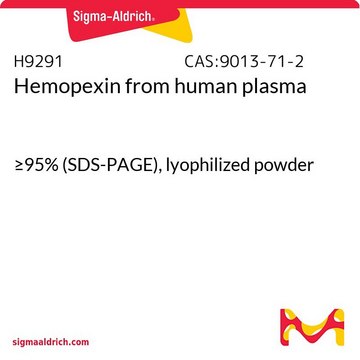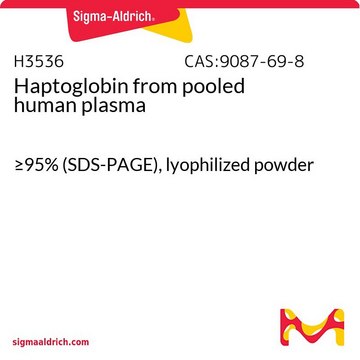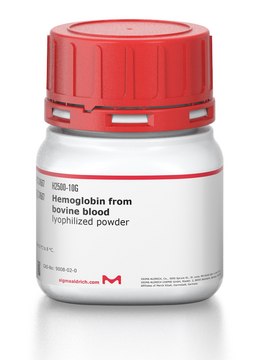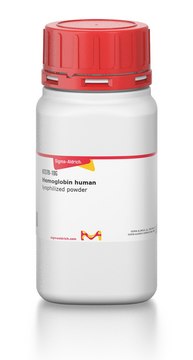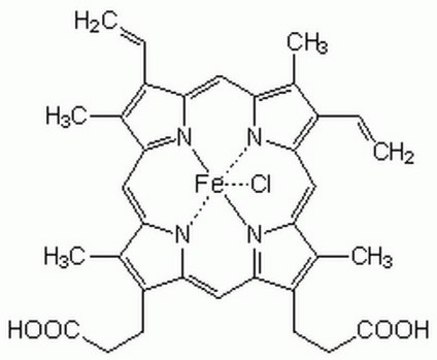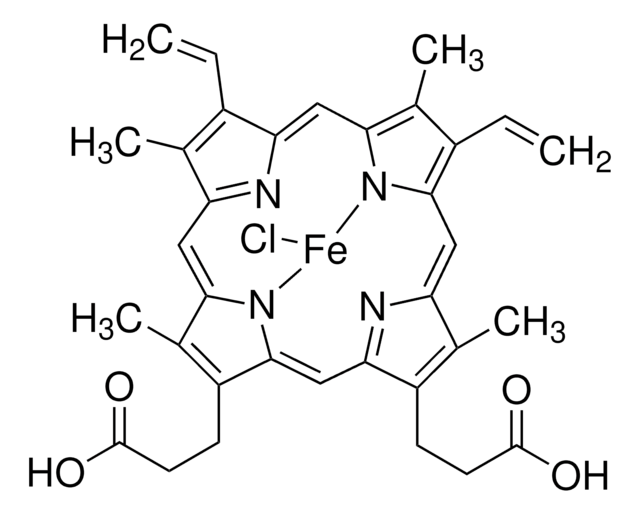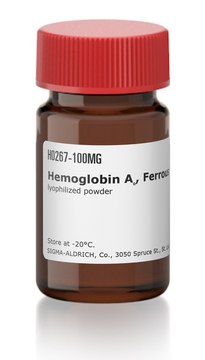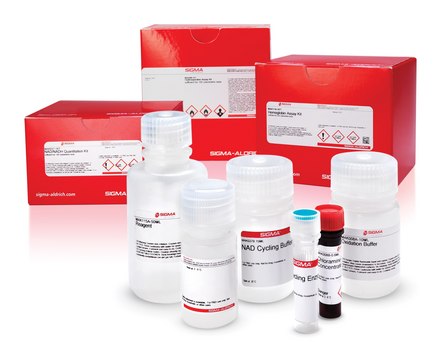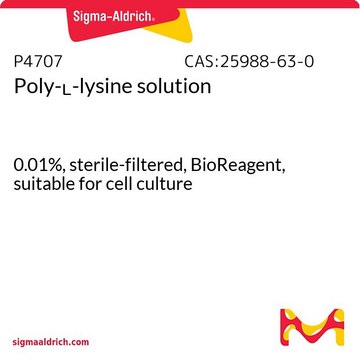SRP6514
Hemopexin from human plasma
≥95% (SDS-PAGE)
Synonym(s):
Beta-1B-glycoprotein, HPX
Sign Into View Organizational & Contract Pricing
All Photos(1)
About This Item
UNSPSC Code:
12352202
Recommended Products
General description
HPX (hemopexin) is a 60kDa acute phase glycoprotein produced by various cell types, including, parenchymal cells of the liver, retinal ganglionic and photoreceptor cells, kidney mesangial cells, and central and peripheral nervous system cells.
Hemopexin is a single-chain protein belonging to the family of blood transport proteins. It binds to heme released into the bloodstream during the degradation process. Recent studies have demonstrated that hemopexin acts as an extracellular antioxidant against hemoglobin-mediated damage in inflammation. Hemopexin protects against heme toxicity and conserves and recycles iron. Abnormal levels of hemopexin are associated with hemolytic anemia, chronic neuromuscular disease, and acute intermittent porphyria.
Biochem/physiol Actions
HPX (hemopexin) has high affinity for heme and binds with it in equimolar amounts. It scavenges free heme, and this heme-HPX is taken up by liver by CD91 (cluster of differentiation)/LRP1 (low density lipoprotein receptor-related protein 1) receptor-mediated endocytosis. This process prevents tissue damage mediated by heme. It functions as a permeability factor in kidney and in steroid-sensitive nephrotic syndrome. In minimal change nephrotic syndrome, it might either be responsible for causing or prolonging glomerular permeability. In diabetic patients with diabetic macular edema (DME), this protein is overexpressed in retinal pigment epithelium (RPE), and HPX-mediated hyperpermeability is inhibited by dexamethasone. Therefore, HPX might be implicated in the pathogenesis of DME.
Physical form
Lyophilized from 11.9 mM phosphate, 137 mM NaCl, 2.7 mM KCl, pH 7.4.
Storage Class Code
13 - Non Combustible Solids
WGK
WGK 2
Flash Point(F)
Not applicable
Flash Point(C)
Not applicable
Regulatory Information
新产品
Choose from one of the most recent versions:
Already Own This Product?
Find documentation for the products that you have recently purchased in the Document Library.
Ghee Rye Lee et al.
JCI insight, 6(20) (2021-09-15)
Infection is a common complication of major trauma that causes significantly increased morbidity and mortality. The mechanisms, however, linking tissue injury to increased susceptibility to infection remain poorly understood. To study this relationship, we present a potentially novel murine model
Role of hemoglobin/heme scavenger protein hemopexin in atherosclerosis and inflammatory diseases.
Mehta NU1and Reddy ST.
Current Opinion in Lipidology, 26(5), 384-387 (2015)
Identification of the receptor scavenging hemopexin-heme complexes.
Hvidberg V, et al.
Blood, 106(7), 2572-2579 (2005)
Cristina Hernández et al.
Diabetes care, 36(9), 2815-2821 (2013-04-27)
Hemopexin is a well-recognized permeability factor in the kidney, but its potential role in blood-retinal barrier (BRB) breakdown has not been explored. The main aims of this study were as follows: 1) to determine hemopexin expression in the retina and
Our team of scientists has experience in all areas of research including Life Science, Material Science, Chemical Synthesis, Chromatography, Analytical and many others.
Contact Technical Service